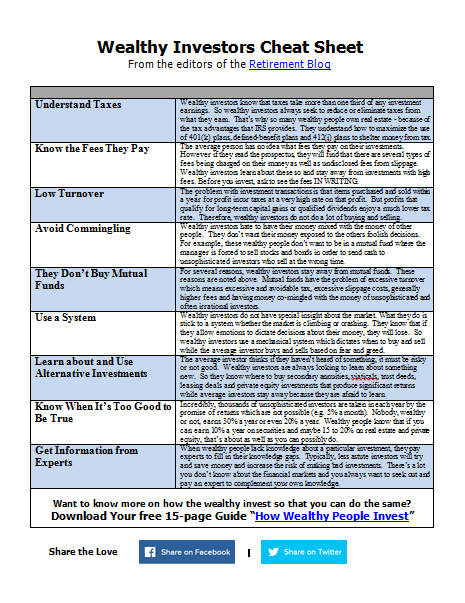The approach to investing as a retiree is generally different from that of a young person. They're both in different circumstances. They've got different goals, prospects, and, most importantly, different time lines to achieve what they want financially. These differences call for different risk tolerances for them - and therefore different retirement investment choices.
As a retiree, don't look to see which fund or stocks did best in the last 12 months. The investments that do best almost always have the most risk (equal chance to increase or decrease). Instead, you want any retirement investment to have a high "risk adjusted return." That means, you want the best return for a given amount of risk, not just the highest return. By selecting retirement investments based on risk profile, you will have a more secure portfolio than with a focus on returns.
We all invest for income and growth. More of either is welcomed. But unfortunately 'more' comes at a risk. Higher retirement investment returns inevitably are associated with higher risk. And higher risk means greater chance of loss. On the other hand, where there's very little or no risk, your effective return - after taxes and inflation - is often little, none, or slightly negative.
Many retirement investments come with a published "Sharpe ratio." You will see this number for example in Morningstar when evaluating mutual funds. Read the explanation and you will understand how this is a very important indicator to help you choose an appropriate retirement investment.
One page "invest like the rich" cheat sheet provides short explanations of how the rich investment differently. You don't need to be rich to copy what they do. Download now.
When you understand your tolerance for risk, you'll better choose retirement investments consistent with it. That'll allow you to sleep better - aware that tomorrow you probably won't be destitute. That's because although we like to seek big returns, no reward will ever be large enough if the consequences of losing are too much to bear. Realizing what we can't afford to lose is the first rule of responsible retirement investing.
We can apprise ourselves of our retirement investment risk tolerance by considering our answers to four questions:
- Status - What is your present financial circumstance?
- Goal - What do you want to accomplish through your investing?
- Loss level- How much of what you have are you willing to lose seeking higher returns?
- Risk Need - What's your risk need?
As a retiree, your financial status is determined by your income from social security and/or pension along with what your retirement savings can supply. And you're lifestyle is pretty much set for the duration of your retirement years.
The amount of income and wealth you have determines how much you could afford to lose in your retirement investments -and still pretty much enjoy your same retirement lifestyle. If you've only minor savings and little or no pension/social security, all of which you count on for living expenses, you'll need a low risk profile in any retirement investment. On the other hand, if you live comfortably on a pension and social security, you can afford to take more risk, within reason of course, with retirement investments that can provide a higher return.
However, here's a paradox. If your pension and social security are not sufficient for your living expenses, you may need to get a certain return on your retirement investments just to make it financially. In that case, it may be prudent to not opt for the least risky retirement investment choices as they won't pay enough. For example, if you need to take 6% annually from your portfolio and it's all sitting in bank accounts earning 2%, you will have a problem of eroding your principal over time and outliving your money. More risk is a retirement investing necessity in such a situation.
The table shows the circumstances and risk levels associated with the 4 elements that determine your retirement investment risk tolerance. Apply your circumstance to each element to see what level of risk tolerance you should attribute to yourself and to your retirement investment choices.

Leave a Reply